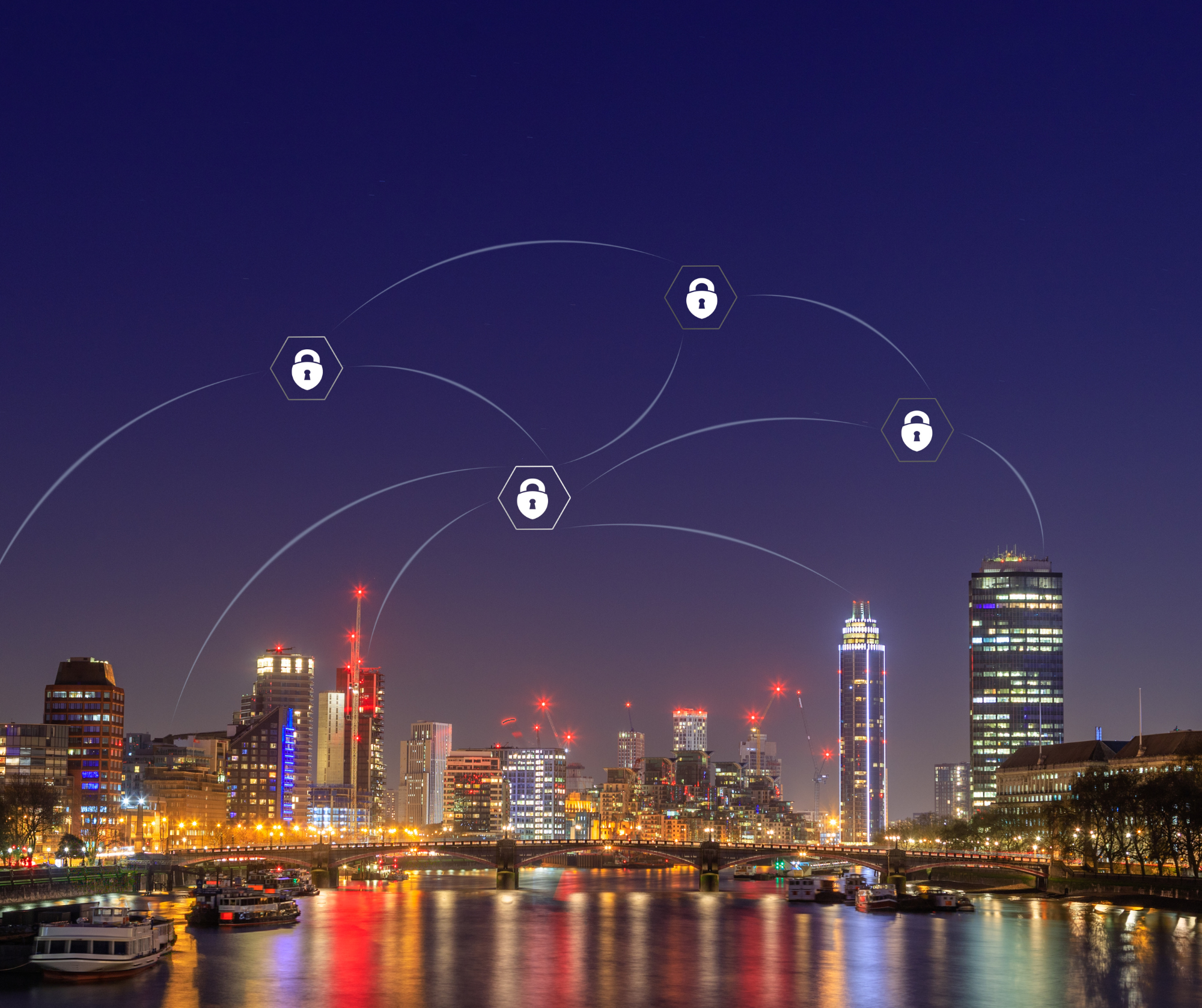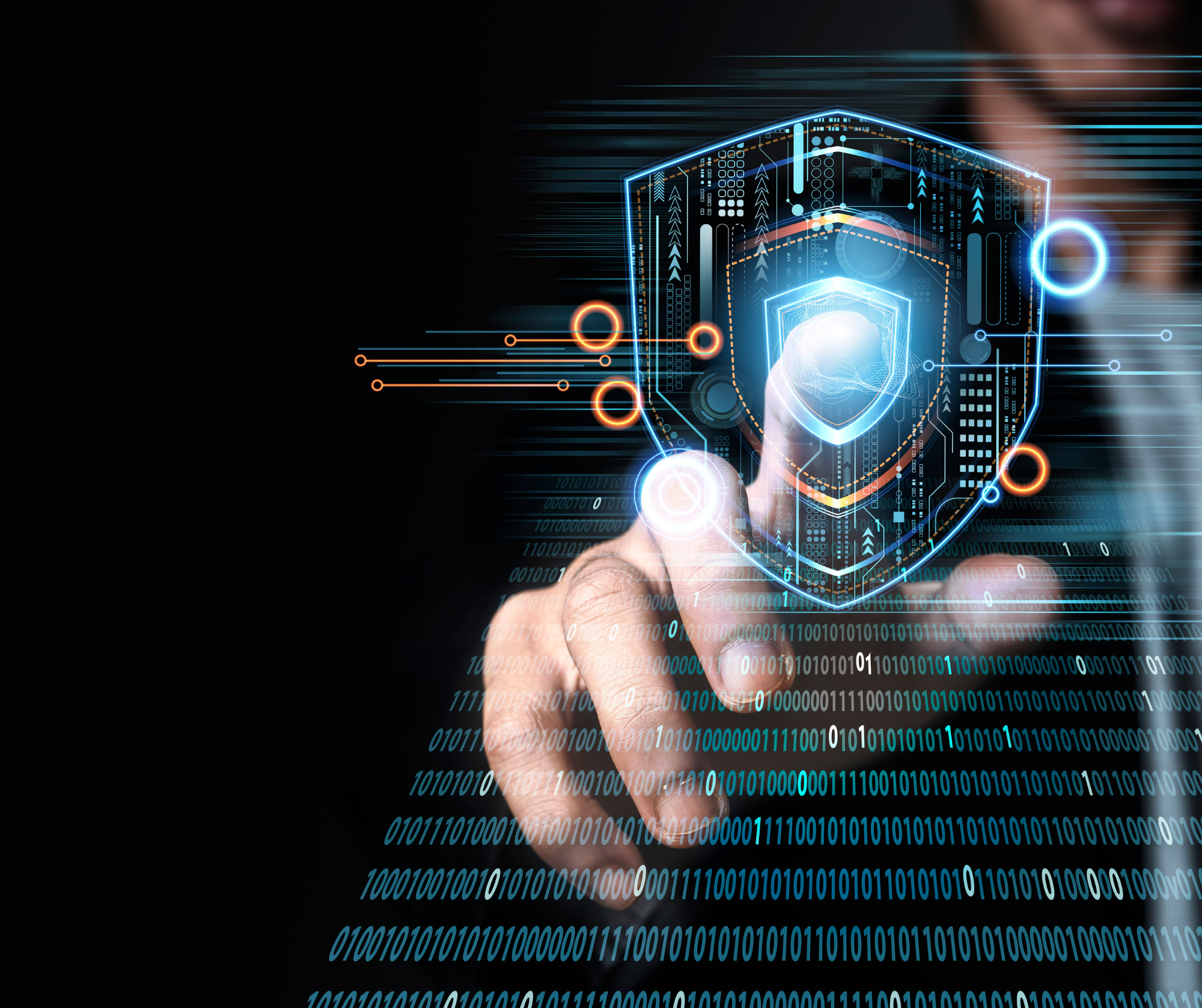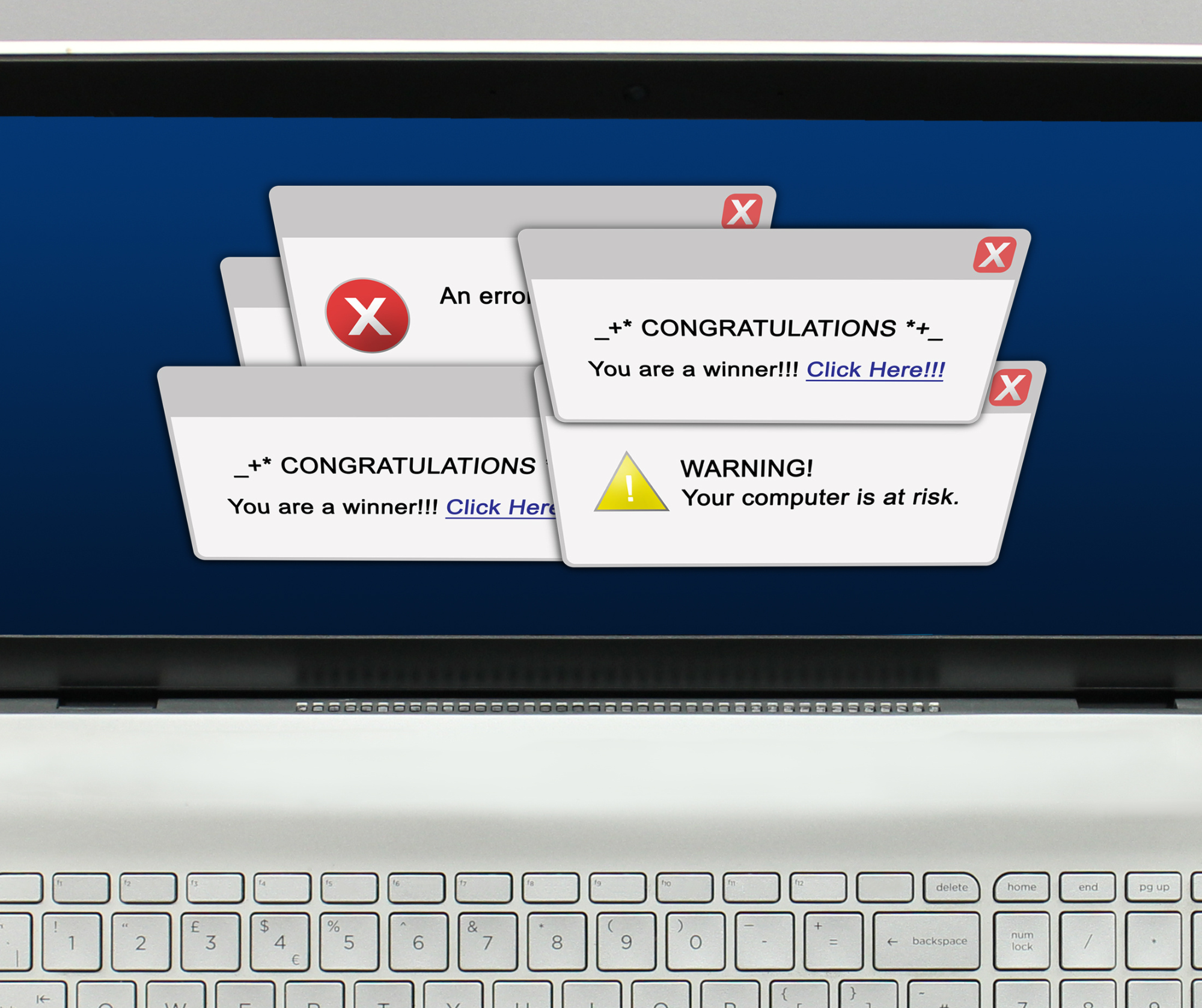Our online accounts are gateways to our personal and professional lives. From social media profiles to banking accounts, each login represents a slice of our identity and security. But what happens when these gateways are breached? Hacked accounts not only compromise our privacy but also pose serious risks to our finances and reputation. Understanding how accounts get hacked, recognizing the signs, and knowing what to do when it happens are essential skills in safeguarding our digital presence. How Does an Account Get Hacked? Cybercriminals employ various techniques to gain unauthorized access to accounts: Phishing Attacks: These deceptive emails or messages mimic legitimate sources to trick users into revealing their login credentials or personal information. Weak Passwords: Passwords that are easy to guess or reuse across multiple accounts are vulnerable to brute-force attacks or credential stuffing. Malware: Malicious software can infect devices, allowing hackers to capture keystrokes or remotely control systems to steal login details. Security Vulnerabilities: Exploiting weaknesses in software or network infrastructure enables attackers to bypass security measures and gain entry to accounts. Signs Your Account is Hacked Identifying a hacked account can be challenging, but there are common indicators to watch for: Unauthorized Activity: Check for any unfamiliar purchases, messages, or changes to account settings that you didn’t initiate. Password Changes: If you’re suddenly unable to log in due to a changed password, it could be a sign that someone else has gained access. Strange Emails or Messages: Be wary of notifications from your account that you didn’t initiate, especially if they contain links or requests for personal information. Unexplained Alerts: Notifications from your security software or service providers about suspicious login attempts or unusual activity should not be ignored. What to Do When Your Account is Hacked Act swiftly to regain control and minimize potential damage: Change Your Passwords: Immediately reset passwords for the compromised account and any others that share similar credentials. Use strong, unique passwords for each account. Review Account Activity: Check for any unauthorized transactions or changes and report them to the respective service providers. Enable Two-Factor Authentication (2FA): Adding an extra layer of security can prevent unauthorized access, even if your password is compromised. Scan for Malware: Run antivirus scans on your devices to remove any malicious software that may have facilitated the breach. Contact Support: Reach out to the customer support teams of affected services for assistance and guidance on restoring account security. How to Protect Your Accounts Prevention is the best defense against account hacking. Here are proactive steps to enhance your online security: Use Strong, Unique Passwords: Create complex passwords or passphrases that are difficult to guess and avoid reusing them across different accounts. Stay Vigilant Against Phishing: Verify the authenticity of emails and messages before clicking on links or providing sensitive information. Keep Software Updated: Regularly install updates and patches for your operating system, applications, and security software to patch known vulnerabilities. Monitor Account Activity: Routinely review login history and account settings for any suspicious changes or activity. Educate Yourself: Stay informed about the latest cybersecurity threats and best practices through reputable sources and security awareness training. By understanding the tactics used by hackers, recognizing the signs of a hacked account, and taking proactive measures to protect ourselves, we can mitigate the risks of online security breaches. Remember, safeguarding our digital identities is a shared responsibility, and staying vigilant is key to staying safe in the ever-evolving landscape of cyberspace. Explore a wealth of information on our website https://www.hammett-tech.com/our-blog/ Visit our Socials! https://www.facebook.com/HammettTech http://www.linkedin.com/companies/hammett-technologies Hammett Technologies (@HammettTech) / Twitter
Artificial Intelligence (AI)—the game-changer that is transforming the cybersecurity landscape. From predictive analytics to real-time threat detection, AI is proving to be an invaluable asset in the fight against cybercrime. Let’s dive into how AI is revolutionizing cybersecurity and driving businesses forward. The Growing Cybersecurity Landscape Cyber threats are becoming more sophisticated and frequent, posing significant risks to businesses of all sizes. According to a report by Cybersecurity Ventures, global cybercrime costs are expected to reach $10.5 trillion annually by 2025. With such high stakes, the need for advanced cybersecurity solutions has never been greater. AI: The New Frontier in Cyber Defense AI’s ability to learn, adapt, and respond in real time makes it an ideal tool for cybersecurity. Here are some key ways AI is enhancing cybersecurity measures: Predictive Analytics: Foreseeing Threats Before They StrikeAI systems can analyze vast amounts of data to identify patterns and predict potential threats. For instance, Darktrace, a leading AI cybersecurity firm, uses machine learning to detect anomalies in network traffic that could indicate a cyber-attack. By anticipating threats before they occur, businesses can take proactive measures to mitigate risks. Real-Time Threat Detection: Catching Intruders in the ActTraditional security systems often fail to detect breaches until it’s too late. AI, on the other hand, can monitor network activity continuously and identify suspicious behavior in real time. For example, IBM’s Watson for Cyber Security leverages AI to sift through millions of data points and provide insights on potential security incidents, allowing security teams to respond swiftly and effectively. Automated Incident Response: Speeding Up the Reaction TimeWhen a cyber-attack occurs, every second counts. AI-powered systems can automate the response to certain types of threats, reducing the time it takes to contain and mitigate the impact. Companies like Palo Alto Networks offer AI-driven solutions that can automatically isolate infected devices, preventing the spread of malware and minimizing damage. Enhanced User Authentication: Strengthening Access ControlsAI is also making strides in improving user authentication processes. Biometric authentication methods, such as facial recognition and fingerprint scanning, are becoming more secure with AI’s ability to detect spoofing attempts. Additionally, AI can analyze user behavior to detect anomalies that may indicate compromised credentials, adding an extra layer of security. While AI offers remarkable capabilities, it is not a silver bullet. Human expertise is still crucial in interpreting AI-generated insights and making strategic decisions. Cybersecurity professionals can leverage AI to enhance their skills, focus on complex threats, and develop more effective defense strategies. The integration of AI in cybersecurity is still in its early stages, but the potential is enormous. As AI technologies continue to evolve, we can expect even more sophisticated tools to emerge, providing stronger defenses against ever-evolving cyber threats. AI is set to revolutionize cybersecurity by offering predictive analytics, real-time threat detection, automated responses, and enhanced user authentication. By combining AI with human expertise, businesses can stay one step ahead of cybercriminals and drive their operations forward with confidence. Explore a wealth of information on our website https://www.hammett-tech.com/our-blog/ Visit our Socials! https://www.facebook.com/HammettTech http://www.linkedin.com/companies/hammett-technologies Hammett Technologies (@HammettTech) / Twitter
In today’s fast-paced digital landscape, businesses are continually seeking innovative solutions to streamline their operations and stay ahead of the curve. With the rapid evolution of technology, the traditional approach to IT infrastructure is no longer sufficient to meet the demands of modern enterprises. This is where Cloud Customization, coupled with Managed Service Provider (MSP) expertise, emerges as a game-changer, offering unparalleled flexibility, scalability, and efficiency. Cloud customization refers to the tailoring of cloud-based solutions to meet the unique needs and requirements of individual businesses. Whether it’s optimizing workflows, enhancing security measures, or improving accessibility, customization allows organizations to harness the full potential of cloud computing while aligning with their specific objectives. One of the most significant advantages of cloud customization lies in its ability to adapt to the evolving needs of a client’s IT infrastructure. Unlike one-size-fits-all solutions, customized cloud environments can be tailored to accommodate changing workloads, integrate with existing systems seamlessly, and scale resources up or down as needed. This agility empowers businesses to respond swiftly to market dynamics and innovation opportunities without being hindered by rigid infrastructure constraints. MSPs play a pivotal role in this transformation journey by leveraging their expertise and experience to design, implement, and manage customized cloud solutions. By partnering with an MSP, organizations can tap into a wealth of knowledge and resources, gaining access to best practices, industry insights, and cutting-edge technologies. Let’s delve into how cloud customization, backed by MSP expertise, can revolutionize a client’s IT infrastructure: Enhanced Performance: Through meticulous customization, MSPs can fine-tune cloud environments to optimize performance and efficiency. This includes optimizing resource allocation, reducing latency, and implementing caching mechanisms to accelerate data access. The result is a highly responsive IT infrastructure capable of supporting mission-critical applications and workflows with ease. Improved Security: Security is a top priority for businesses operating in the digital age. With cloud customization, MSPs can implement robust security measures tailored to the client’s specific requirements and compliance standards. This may involve encryption protocols, access controls, intrusion detection systems, and proactive threat monitoring to safeguard sensitive data and mitigate cyber risks effectively. Cost Optimization: Cloud customization enables organizations to optimize their IT spending by aligning resources with actual usage patterns and business needs. MSPs can help clients identify cost-saving opportunities, such as rightsizing instances, leveraging reserved capacity, or adopting a multi-cloud strategy to minimize expenses without compromising performance or reliability. Seamless Integration: Integrating cloud solutions with existing IT infrastructure can be a complex undertaking. However, with the expertise of an MSP, organizations can ensure seamless integration across platforms, applications, and data sources. Whether migrating legacy systems to the cloud or implementing hybrid environments, MSPs can architect solutions that facilitate smooth interoperability and data exchange. Scalability and Flexibility: Scalability is essential for businesses experiencing fluctuating demand or rapid growth. Customized cloud environments offer unparalleled scalability, allowing organizations to scale resources up or down on-demand without disruption. MSPs can design scalable architectures that accommodate evolving needs, ensuring that IT infrastructure remains agile and responsive to changing business dynamics. Examples of successful cloud customization projects abound across various industries: E-commerce: A global e-commerce platform partnered with an MSP to customize its cloud infrastructure for peak shopping seasons. By optimizing resource allocation and implementing auto-scaling capabilities, the platform seamlessly handled surges in traffic while maintaining high performance and availability. Healthcare: A leading healthcare provider leveraged cloud customization to enhance data security and compliance. Through encryption, access controls, and regular audits, the organization ensured the confidentiality and integrity of patient information while adhering to stringent regulatory requirements. Manufacturing: A manufacturing company embraced cloud customization to modernize its production processes. By integrating IoT devices with cloud-based analytics, the company gained real-time insights into equipment performance, predictive maintenance capabilities, and supply chain optimization, leading to improved efficiency and cost savings. The combination of cloud customization and MSP expertise offers a transformative approach to IT infrastructure management. By tailoring cloud solutions to meet the unique needs of each client, businesses can unlock new levels of agility, scalability, and efficiency, enabling them to thrive in today’s competitive landscape. As technology continues to evolve, organizations must embrace customization as a cornerstone of their digital strategy to stay ahead of the curve and drive innovation. Explore a wealth of information on our website https://www.hammett-tech.com/our-blog/ Visit our Socials! https://www.facebook.com/HammettTech http://www.linkedin.com/companies/hammett-technologies Hammett Technologies (@HammettTech) / Twitter
In today’s interconnected world, where digital platforms govern much of our daily lives, the threat of cyber warfare looms large. From state-sponsored attacks to malicious hackers seeking personal gain, the battlefield has shifted to the digital realm. Protecting yourself from cyber warfare has become as essential as locking your doors at night. Here are 30 crucial strategies to fortify your digital defenses and stay secure in an age of cyber conflict. Update Regularly: Keep all your devices, software, and applications updated with the latest security patches. These updates often include fixes for known vulnerabilities. Strong Passwords: Use strong, unique passwords for each of your accounts. Consider using a password manager to generate and store complex passwords securely. Multi-Factor Authentication (MFA): Enable MFA whenever possible. This adds an extra layer of security by requiring more than just a password to access your accounts. Beware of Phishing: Be cautious of suspicious emails, messages, or links. Cyber attackers often use phishing tactics to trick users into revealing sensitive information or installing malware. Secure Wi-Fi Networks: Use encrypted Wi-Fi networks and change default router passwords to prevent unauthorized access to your home network. Firewalls: Activate firewalls on your devices and network to monitor and control incoming and outgoing traffic, providing an additional barrier against cyber threats. Encrypt Data: Encrypt sensitive data stored on your devices or transmitted over the internet to ensure that even if it’s intercepted, it remains unreadable to unauthorized users. Backup Data Regularly: Regularly back up your important files and data to an external hard drive or a cloud storage service. In the event of a cyber attack, you’ll still have access to your information. Use Virtual Private Networks (VPNs): When connecting to public Wi-Fi networks, use a VPN to encrypt your internet traffic and protect your online activities from prying eyes. Limit Personal Information Sharing: Be cautious about the personal information you share online, especially on social media platforms. Cyber attackers can exploit this information for targeted attacks. Monitor Account Activity: Regularly review your account activity and statements for any suspicious or unauthorized transactions. Report any anomalies immediately. Enable Device Tracking: Activate device tracking features on your smartphones, tablets, and laptops to locate them in case they’re lost or stolen. Keep Personal Information Private: Avoid sharing sensitive personal information, such as your social security number or bank account details, unless absolutely necessary and through secure channels. Use Anti-Virus Software: Install reputable anti-virus and anti-malware software on all your devices and keep them updated to detect and remove malicious threats. Educate Yourself: Stay informed about the latest cyber threats and security best practices through reputable sources. Awareness is key to staying one step ahead of cyber attackers. Be Wary of Public Charging Stations: Avoid using public charging stations, as they can be compromised to install malware or steal data from your device. Secure Physical Devices: Physically secure your devices by locking them when not in use and storing them in safe locations to prevent theft or unauthorized access. Regular Security Audits: Conduct regular security audits of your devices, networks, and accounts to identify and address any vulnerabilities or weaknesses. Limit App Permissions: Review and limit the permissions granted to apps on your devices to prevent them from accessing unnecessary data or functions. Practice Safe Browsing Habits: Avoid visiting suspicious websites or clicking on unknown links, as they may contain malware or phishing attempts. Secure IoT Devices: Secure Internet of Things (IoT) devices, such as smart thermostats or security cameras, by changing default passwords and keeping firmware updated. Use Secure Communication Channels: When communicating sensitive information, use encrypted messaging apps or secure email services to protect your privacy. Implement Access Controls: Implement access controls and user permissions within your organization’s networks to restrict access to sensitive data and systems. Employee Training: Provide regular cybersecurity training to employees to educate them about common threats and how to avoid falling victim to cyber-attacks. Incident Response Plan: Develop and regularly update an incident response plan outlining the steps to take in the event of a cyber-attack to minimize damage and recover quickly. Collaborate with Security Experts: Work with cybersecurity experts or consultants to assess your security posture, identify vulnerabilities, and implement effective solutions. Secure Cloud Storage: If using cloud storage services, ensure they employ robust security measures, such as encryption and access controls, to safeguard your data. Monitor for Anomalies: Use intrusion detection systems and security monitoring tools to detect unusual or suspicious activity on your networks and devices. Secure Supply Chain: Assess the security practices of your vendors and partners to ensure they meet your organization’s standards and don’t pose a risk to your cybersecurity. Stay Vigilant: Cyber threats are constantly evolving, so stay vigilant and proactive in protecting yourself from emerging threats by staying informed and adapting your defenses accordingly. Cyber warfare presents a significant and ever-present threat in today’s digital landscape. By implementing these 30 essential strategies, you can fortify your defenses and reduce the risk of falling victim to cyber-attacks. Remember, cybersecurity is everyone’s responsibility, and staying safe requires ongoing vigilance and proactive measures. Explore a wealth of information on our website https://www.hammett-tech.com/our-blog/ Visit our Socials! https://www.facebook.com/HammettTech http://www.linkedin.com/companies/hammett-technologies Hammett Technologies (@HammettTech) / Twitter
In today’s interconnected world, cybersecurity is more critical than ever. With the increasing sophistication of cyber threats, organizations are turning to innovative technologies to bolster their defenses. Among these technologies, Artificial Intelligence (AI) stands out as both a powerful ally and a potential double-edged sword in the ongoing battle against cyber threats. As AI continues to evolve, so too does its role in cybersecurity, presenting both opportunities and challenges that demand our attention. The AI Advantage in Cybersecurity AI offers a range of capabilities that are invaluable in the realm of cybersecurity. One of its most significant advantages is its ability to analyze vast amounts of data at speeds far beyond human capability. This capability enables AI-powered systems to detect patterns and anomalies indicative of cyber threats in real-time, allowing for swift and proactive responses to potential breaches. Moreover, AI can enhance threat intelligence by continuously learning from new data and adapting its algorithms to evolving threats. This adaptability is crucial in a landscape where cyber attackers are constantly developing new tactics and techniques to bypass traditional security measures. Furthermore, AI-driven automation can streamline routine cybersecurity tasks, freeing up human analysts to focus on more complex and strategic aspects of threat detection and response. This not only increases efficiency but also allows organizations to mitigate the growing shortage of skilled cybersecurity professionals. The Dark Side of AI in Cybersecurity While AI holds great promise in strengthening cybersecurity defenses, its proliferation also raises concerns about potential misuse and unintended consequences. One such concern is the weaponization of AI by malicious actors to launch more sophisticated and targeted cyber-attacks. For example, adversaries could use AI to generate highly convincing phishing emails or to automate the exploitation of vulnerabilities in software systems. Additionally, AI-powered malware could autonomously adapt its behavior to evade detection by traditional security measures, posing a significant challenge to defenders. Moreover, there is the risk of AI algorithms inheriting biases or making flawed decisions, leading to false positives or false negatives in threat detection. Such errors could undermine trust in AI-driven security solutions and result in costly mistakes for organizations. Navigating the Challenges Ahead In light of the rising threat of AI in cybersecurity, it is imperative that organizations take proactive steps to address these challenges. One approach is to prioritize transparency and accountability in the development and deployment of AI-powered security solutions. By ensuring that AI algorithms are explainable and auditable, organizations can better understand and mitigate the risks associated with their use. Furthermore, investing in robust cybersecurity training and education programs is essential to equip personnel with the knowledge and skills needed to leverage AI effectively while also recognizing and mitigating its potential risks. Collaboration and information sharing among industry stakeholders are also critical in staying ahead of emerging cyber threats. By fostering a culture of collaboration, organizations can collectively pool their resources and expertise to develop innovative AI-driven solutions that outpace evolving cyber threats. Lastly, policymakers and regulatory bodies play a vital role in shaping the responsible use of AI in cybersecurity through the establishment of clear guidelines and standards. By promoting ethical AI practices and accountability mechanisms, policymakers can help ensure that AI remains a force for good in the fight against cyber threats. The rise of AI in cybersecurity presents both unprecedented opportunities and daunting challenges for organizations worldwide. While AI-powered technologies hold great promise in bolstering our defenses against cyber threats, they also introduce new risks that demand careful consideration and proactive mitigation strategies. By embracing transparency, fostering collaboration, and prioritizing ethical AI practices, we can harness the power of AI to build more resilient and adaptive cybersecurity defenses. Ultimately, the key to staying ahead of the rising threat of AI in cybersecurity lies in our ability to adapt, innovate, and work together towards a safer and more secure digital future. Explore a wealth of information on our website https://www.hammett-tech.com/our-blog/ Visit our Socials! https://www.facebook.com/HammettTech http://www.linkedin.com/companies/hammett-technologies Hammett Technologies (@HammettTech) / Twitter
Global Cybersecurity In today’s interconnected world, the internet serves as a vital artery for global communication, commerce, and innovation. However, alongside its myriad benefits, the digital age has brought forth a new frontier of challenges, chief among them being cybersecurity. As societies and economies become increasingly reliant on digital infrastructure, the importance of robust cyber-resilience capabilities cannot be overstated. Yet, a troubling reality persists there exists a significant gap in cyber-resilience capacity across organizations and countries, a phenomenon often referred to as global cyber inequity. Understanding the nuances and implications of this cyber inequity is crucial for charting a path towards a more secure digital future. From underfunded small businesses to developing nations with limited technological resources, the disparities in cyber preparedness are glaring. These inequities manifest in various forms, including disparities in access to cybersecurity expertise, technological infrastructure, funding, and regulatory frameworks. At the heart of the issue lies a complex interplay of socioeconomic factors, technological advancements, and geopolitical dynamics. For instance, economically disadvantaged regions may lack the resources to invest in cybersecurity measures, leaving them more vulnerable to cyber threats. Similarly, developing countries may struggle to keep pace with rapidly evolving cyber threats due to limited access to cutting-edge technologies and skilled cybersecurity professionals. Moreover, the digital divide exacerbates existing inequalities, as marginalized communities often bear the brunt of cyberattacks due to inadequate protection measures and awareness. This not only poses significant risks to individual privacy and security but also undermines trust in digital systems and hampers socioeconomic development. Addressing global cyber inequity demands a multifaceted approach that transcends traditional boundaries. While individual organizations and governments play a pivotal role in bolstering their cyber-resilience capabilities, a systemic solution is imperative to tackle the root causes of inequity. First and foremost, fostering international cooperation and collaboration is paramount. Cyber threats know no borders, and effective cybersecurity requires a collective effort. By sharing best practices, threat intelligence, and resources, countries can enhance their collective resilience against cyber threats while bridging the gap between the haves and have-nots in the cyber realm. Furthermore, investing in capacity-building initiatives is essential for empowering underserved communities and nations to strengthen their cyber defenses. This includes providing technical assistance, training programs, and financial support to help organizations and governments develop robust cybersecurity strategies tailored to their unique needs and constraints. Additionally, policymakers must prioritize cybersecurity on the global agenda and enact regulatory frameworks that promote cybersecurity standards and practices across industries and regions. By incentivizing cybersecurity investments and enforcing compliance, governments can create a more level playing field and mitigate the risk of cyber inequity exacerbating existing socioeconomic disparities. Education and awareness-raising efforts are also instrumental in closing the cyber literacy gap and empowering individuals to protect themselves against cyber threats. From basic cybersecurity hygiene practices to advanced threat detection techniques, equipping people with the knowledge and skills to navigate the digital landscape safely is crucial for fostering a cyber-resilient society. In conclusion, global cyber inequity poses a significant threat to the stability and prosperity of the digital ecosystem. To address this pressing challenge, a concerted effort is needed to promote collaboration, invest in capacity building, enact robust regulatory frameworks, and raise awareness. Only through collective action and a systemic approach can we pave the way towards a more equitable and secure cyber future for all. Source: Global Cybersecurity Outlook 2024 | World Economic Forum (weforum.org) Explore a wealth of information on our website https://www.hammett-tech.com/our-blog/ Visit our Socials! https://www.facebook.com/HammettTech http://www.linkedin.com/companies/hammett-technologies Hammett Technologies (@HammettTech) / Twitter
From safeguarding sensitive data to fostering customer trust and compliance with regulations, the implications of prioritizing network security are far-reaching and essential for the sustained success of any enterprise. Protecting Sensitive Data: At the heart of network security lies the imperative to safeguard sensitive data – the lifeblood of any business. Whether it’s confidential customer information, proprietary intellectual property, or critical financial data, the repercussions of a data breach can be financially devastating and tarnish a company’s reputation irreparably. By implementing robust security measures such as encryption, access controls, and regular security audits, businesses can fortify their defenses against cyber threats and mitigate the risk of data breaches. Maintaining Customer Trust: In an era where data privacy concerns loom large, earning and maintaining customer trust is paramount for businesses. By demonstrating a commitment to protecting customer data through stringent network security measures, businesses can cultivate long-term relationships with their clientele. This not only bolsters brand loyalty but also translates into tangible business outcomes, such as increased customer retention and referrals. Compliance With Regulations: The regulatory landscape governing data protection is continually evolving, with stringent mandates such as the GDPR and HIPAA setting the bar for compliance standards. Failure to adhere to these regulations can result in hefty fines and legal repercussions. By prioritizing network security and aligning it with regulatory requirements, businesses can ensure compliance while mitigating legal risks and reputational damage. Preventing Downtime: Cyberattacks pose a significant threat to business continuity, with the potential to disrupt operations and incur substantial financial losses. Investing in robust network security mechanisms, such as firewalls and intrusion detection systems, can help preemptively thwart cyber threats and prevent costly downtime. By proactively safeguarding their networks, businesses can ensure uninterrupted service delivery and maintain a competitive edge in the market. Enhancing Employee Productivity: A secure network environment fosters a culture of productivity and innovation by empowering employees to focus on their core tasks without the distraction of looming cyber threats. By providing a secure digital workspace, businesses can enhance employee morale, streamline workflow processes, and drive overall productivity gains. In an increasingly digitized business landscape fraught with cyber threats, prioritizing network security is not just a prudent business decision but a critical imperative for survival and success. By investing in robust security measures, businesses can fortify their defenses, safeguard sensitive data, and cultivate trust with customers. Moreover, by staying ahead of regulatory requirements and minimizing downtime, businesses can position themselves for sustained growth and resilience in an ever-evolving digital ecosystem. In conclusion, safeguarding your business through robust network security measures is not merely an option but a strategic imperative in today’s interconnected world. By prioritizing network security, businesses can fortify their defenses, protect sensitive data, and forge enduring relationships with customers, laying the foundation for sustained success and growth in the digital age. Explore a wealth of information on our website https://www.hammett-tech.com/our-blog/ Visit our Socials! https://www.facebook.com/HammettTech http://www.linkedin.com/companies/hammett-technologies Hammett Technologies (@HammettTech) / Twitter
In the fast-paced world of business, finding efficient and budget-friendly IT solutions has become crucial. Say goodbye to the headaches of managing your own clunky and pricey IT equipment. In this blog, we’ll delve into why leasing IT solutions, especially through cloud computing, has become a game-changer for businesses of all shapes and sizes in 2024. Let’s face it, dealing with in-house IT equipment comes with its fair share of challenges. Limited office space means that bulky hardware can quickly become a headache. Plus, the costs of setting up and maintaining your own IT infrastructure can add up to a hefty sum, not to mention the ongoing expenses of electricity bills and professional maintenance services. The Cloud A Game-Changer for Businesses: Enter cloud computing, the superhero of modern IT solutions. In 2024, businesses are finding relief in the cloud, which offers a more cost-effective and streamlined alternative to traditional setups. With the cloud, you can kiss goodbye to upfront costs, sky-high electricity bills, and the stress of managing complex IT systems. Budget-Friendly Payment Plans: One of the best perks of cloud solutions is the switch to flat-rate payment plans. Businesses can now access external servers remotely without breaking the bank. This not only frees up capital for other important projects but also makes budgeting a breeze, giving you peace of mind knowing exactly what you’ll be paying each month. Accessible and Scalable Across Industries: Cloud computing isn’t just for tech-savvy businesses—it’s for everyone. Whether you’re in healthcare, finance, manufacturing, or retail, the cloud offers accessibility and scalability tailored to your industry’s unique needs. This flexibility means you can easily expand your IT infrastructure as your business grows, without skipping a beat. Top-Notch Security and Compliance: In today’s digital world, keeping your data safe is paramount. Cloud service providers invest heavily in top-notch security measures, ensuring that your business data remains protected against ever-evolving threats. With built-in compliance standards, you can rest easy knowing that your business is meeting all regulatory requirements. As we navigate the challenges of modern business in 2024, the trend toward leasing IT solutions, especially through the cloud, is undeniable. The financial savings, scalability, and enhanced security offered by cloud computing make it a no-brainer for businesses looking to thrive in the digital age. Embrace the cloud, lighten the load of managing in-house IT, and pave the way for a more agile and cost-effective future. Explore a wealth of information on our website https://www.hammett-tech.com/our-blog/ Visit our Socials! https://www.facebook.com/HammettTech http://www.linkedin.com/companies/hammett-technologies Hammett Technologies (@HammettTech) / Twitter
In the heart of every learning center beats the desire to ignite the spark of knowledge and curiosity in every student who walks through its doors. It’s a place where learning isn’t just about textbooks and lectures; it’s about fostering connections, nurturing growth, and celebrating each student’s unique journey. But in today’s digital age, this noble mission is bolstered by a powerful ally: Information Technology (IT) services that breathe life into the educational experience, making it more personalized, accessible, and enriching than ever before. Customized Learning Management Systems (LMS): Imagine walking into a learning center and being greeted not just by friendly faces but also by a seamlessly integrated online platform that feels like an extension of the warm, welcoming environment. This is the magic of a customized Learning Management System (LMS) that serves as the beating heart of the center’s operations. It’s where instructors share resources, students collaborate on projects, and administrators keep everything running smoothly behind the scenes. With the right IT solutions in place, the learning center becomes more than just a physical space; it becomes a hub of connectivity and community. Virtual Classroom Solutions: But the true beauty of IT services lies in their ability to transcend physical boundaries and bring education to anyone, anywhere. Virtual classroom solutions transform the traditional notion of learning, allowing students to participate in live classes, engage in interactive discussions, and receive personalized feedback—all from the comfort of their own homes. Whether a student lives down the street or across the globe, technology bridges the gap, ensuring that no one is left behind on their educational journey. Interactive Learning Tools: And let’s not forget the power of interactive learning tools to captivate imaginations and inspire a love of learning. From educational apps that turn math practice into a game to multimedia resources that bring history to life, these tools inject a sense of excitement and discovery into every lesson. It’s not just about memorizing facts; it’s about exploring, experimenting, and experiencing the joy of learning in all its forms. Cybersecurity Measures: Of course, with great power comes great responsibility, and that’s where cybersecurity measures step in to protect the sanctity of the learning environment. Just as a caring teacher watches over their students, cybersecurity measures safeguard sensitive data and ensure that every interaction remains safe and secure. It’s a digital guardian angel, standing watch to ensure that the focus stays where it belongs: on learning, growth, and exploration. But perhaps the most beautiful thing about IT services in learning centers is the way they empower educators to connect with students on a deeper level. By harnessing the power of data analytics, instructors gain invaluable insights into each student’s unique learning journey, allowing them to tailor their approach and provide the support and guidance needed to succeed. It’s not about one-size-fits-all solutions; it’s about recognizing the individuality of each student and celebrating their strengths while supporting their areas for growth. In the end, IT services aren’t just about technology; they’re about people. They’re about creating a nurturing, supportive environment where students can thrive, instructors can innovate, and everyone can come together to celebrate the joy of learning. So the next time you step into a learning center, take a moment to appreciate the magic happening behind the scenes—the magic of IT services transforming education into something truly extraordinary. Explore a wealth of information on our website https://www.hammett-tech.com/our-blog/ Visit our Socials! https://www.facebook.com/HammettTech http://www.linkedin.com/companies/hammett-technologies Hammett Technologies (@HammettTech) / Twitter
In the fast-paced world of business, where every click and download can have significant consequences, vigilance against cyber threats is paramount. Picture this: you’re diligently working away at your computer, focused on your tasks, when suddenly, a pop-up notification hijacks your screen. Your heart skips a beat as the ominous message declares that your PC is infected with a virus. Panic sets in, and the urge to click and resolve the issue becomes almost irresistible. But wait – before you take action, pause and consider: could this be a scareware tactic employed by hackers? Scareware is a malicious software tactic used by cybercriminals to trick users into downloading harmful software or divulging sensitive information. Often disguised as legitimate system alerts or notifications, these pop-ups are designed to incite fear and urgency, coercing unsuspecting users into clicking on them. Once clicked, the user may inadvertently install malware onto their device, compromising its security and potentially putting sensitive business data at risk. Small businesses, in particular, are vulnerable targets for such tactics. With limited resources dedicated to cybersecurity and employees wearing multiple hats, it’s easy for these deceptive pop-ups to slip through the cracks. However, awareness and education are powerful tools in the fight against cyber threats. So, what should you do if you encounter a suspicious pop-up claiming your computer is infected with a virus? First and foremost, resist the temptation to click on it. Regardless of how legitimate it may appear, clicking on the pop-up or any buttons within it could trigger a virus download. Instead, follow these steps to safeguard your system and protect your business: Remain Calm: Scareware preys on fear and urgency. Take a deep breath and resist the impulse to panic. Close the Browser: Safely close the browser window displaying the pop-up. Avoid clicking on the X, “Close,” or “Cancel” buttons within the pop-up itself, as this could activate the malware. Utilize Task Manager: If closing the browser proves challenging, access the Task Manager (Control + Alt + Delete on PC, Command + Option + Esc on Mac) to force quit the browser or application. Notify IT: Inform your IT department or designated personnel immediately. They can perform a thorough scan to ensure your computer remains secure and free from any potential threats. Educate Employees: Equip your employees with the knowledge and awareness to recognize and respond to scareware tactics. Regular cybersecurity training and updates are essential in fostering a culture of security within your organization. Implement Security Measures: Invest in robust cybersecurity measures, such as firewalls, antivirus software, and regular system updates, to fortify your defenses against cyber threats. By remaining vigilant and proactive, you can shield your business from the insidious dangers of scareware tactics. Remember, when it comes to cybersecurity, an ounce of prevention is worth a pound of cure. Stay informed, stay alert, and together, we can navigate the digital landscape safely and securely Explore a wealth of information on our website https://www.hammett-tech.com/our-blog/ Visit our Socials! https://www.facebook.com/HammettTech http://www.linkedin.com/companies/hammett-technologies Hammett Technologies (@HammettTech) / Twitter










